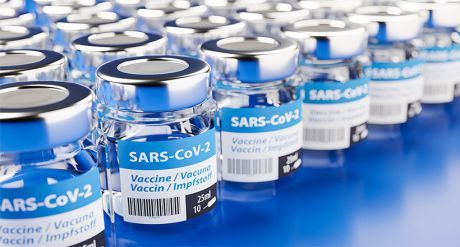News
You are here
COVID and capitalism: vaccines and magic bullets

November 30, 2020
News that various suppliers are nearing release of COVID-19 vaccines is more than welcome. There is no escaping stringent isolation and social disruption without effective vaccines.
Before we get too excited about the “cure” there are some sobering things to consider. As usual, its all in the fine print.
Take the Pfizer vaccine. Announcement of its 95% effectiveness in early clinical trials made headlines around the world. Fine print: it must be shipped and stored at super-cold temperatures, making it a logistical nightmare to distribute universally.
And it is “unstable”. Turns out it becomes less effective or even useless if moved four or more times. These are the sort of flaws that make rigorous testing so important.
So far all we know about the impending vaccines come from manufacturers’ press releases. Our media reported the phenomenally high success rates of the Pfizer and Moderna vaccines without question. Yet the same media reacted to similar claims for Russia’s “Sputnik” vaccine with scepticism.
Not that scepticism isn’t warranted. Russian officials fast tracked Sputnik and released it in August, before large scale clinical trials could be completed. Today Russia’s COVID numbers remain among the world’s worst; either the vaccine is not being made widely available, or it doesn’t work as well as advertised.
Drug companies are working around the clock to find the vaccines. I have no doubt the scientists and researchers doing the work are motivated by the desire to save lives and allay suffering. But their corporate bosses have another motive: profit. Billions of dollars are at stake, and any news of progress sends their stock prices soaring.
The insatiable thirst for profit, and the competition it spawns, hinders the search for pandemic solutions in more ways than one.
Most obviously, different labs toil in secrecy rather than freely sharing information about successes and failures. The website Regulatory Focus offers a vaccine tracker that lists more than 50 corporate and academic labs, around the world, competing to develop the best, the cheapest and most easily distributed vaccine.
There is some regulation and oversight. Vaccines take time to develop and require lengthy test periods to determine they don’t have disastrous side effects that may take time to appear. Controlled human infection model (CHIM) tests generally take 1 to 2 years to complete. But the international bodies setting the tests can only “suggest” caution to manufacturers. Balance that against the competition to get their product to market first. Caution and scientific method versus profit – what do you think will win out.
There is another, deeper issue with capitalism’s search for the cure. The system tends to search for “magic bullet” cures, which can be easily commodified for profit, rather than invest in better and more sustainable manufacturing and agricultural practices. Looking for cures, rather than addressing causes is a contradiction that is bred in capitalism’s very DNA.
This approach limits the field of scientific research and development under capitalism. Regardless of the intentions, good or ill, of most scientists it acts like blinkers on a horse, to limit their field of vision and keep them going where the rider wants them to go. There are exceptions, but the system tends to push to the margins those who do not tell it what it wants to hear.
One such marginalized avenue of research is showing that COVID arose, not from any nefarious intentions, but from the relentless destruction of the natural world at the service of argi-business and rapid industrial development. Society must be revolutionized so that humans and nature are recognized as parts of a whole. And that cannot happen as long as the drive for profit, gain for a minority, exploited from humanity’s multitude, propels the system.
Until that happens, even when the system succeeds in producing an effective COVID vaccine, it will remain unprepared for the next pandemic disaster.
Section:
Topics:










